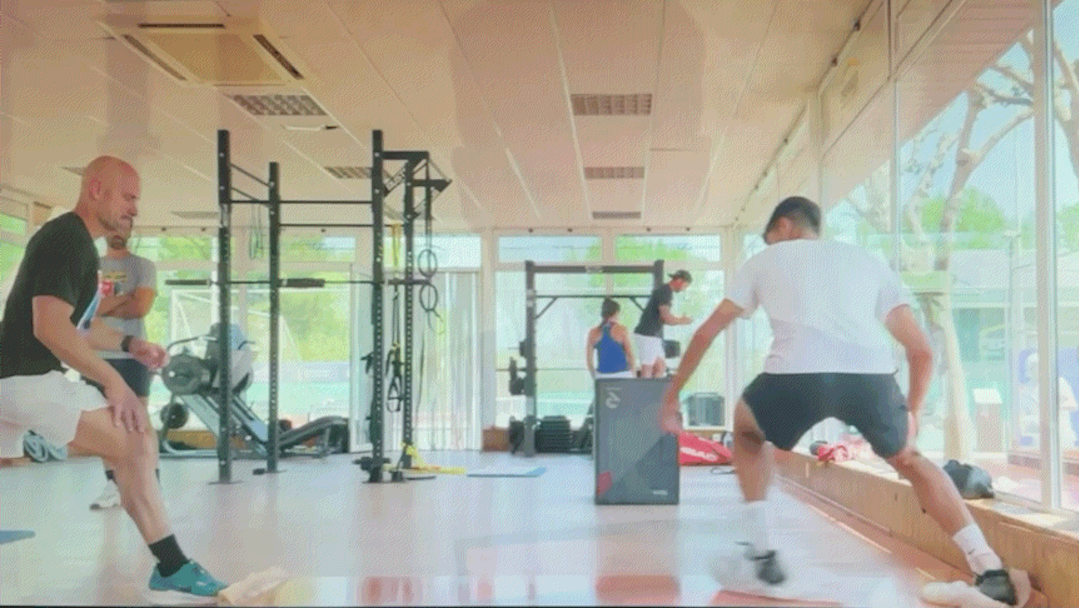Tennis players are conditioned to think of tennis competition and practice in even numbers. Singles and doubles matches, and consequently drills, are typically designed for two or four players. One of the best practice session formats is actually three players on a court engaged in continuous rally using two on one court positions. All players should seriously consider adding two on one play to their training toolbox.
Three players participating in a rally allows them to play aggressive yet still cooperative shots. The overarching idea is to maintain a competitive rally. However, the two player side has a secondary objective of wearing down the person on the other side of the court. When fatigue inevitably sets in, the players rotate positions and the process repeats itself with fresh legs on the solo side. In doing this, all three players systematically rotate through each hitting position.
The reason I love this drill for singles shot development is because aggressively hitting to the corners is kind of rude in cooperative play. It also leads to very short rallies. With two people on the other side of the net standing in each corner, the singles side of the court is free to bomb away because their training partners are already there. Even better, those shots almost always come back.
The drill is similarly good from the two person side of the net for doubles play. When I do this practice session, we vary the hitting position of the player on the solo side to rotate through all the angles and targets that are needed for effective doubles play.
I have included a table at the end of this post that identifies the permutations of player positions along with the developmental benefits of rallies from that formation. The rotation timing is an optimized combination of fatigue on the solo side while still keeping an eye on the clock to make sure all the variations in the table are covered during the time available.
I consider six balls to be the optimum number to have on court for a two on one practice session. That is enough to maintain long sequences of play without excessive breaks. Six is not so many that there are constantly balls underfoot.
The typical scheduled length of this practice is 90 minutes. Ideally the play is almost continuous with short water breaks when the players rotate positions. It is an effective cardio workout as well with the intensity of the one player side balanced out by the active, but less strenuous, two player side of the court.
All players should seriously consider doing this drill from time to time. Additionally this is extremely useful to have in your back pocket if a player from your doubles foursome ever has to cancel at the last minute.
| Court Positions | Development Benefits |
| All on baseline (Cooperative) Solo player in center. | 2 Side: Controlling shots to center of court. 1 Side: Hitting aggressive shots to both corners. |
| All on baseline (Cooperative) Solo player on ad/deuce side | 2 Side: Consistent crosscourt or down the line shots. 1 Side: Switching directions between crosscourt and down the line . |
| All on baseline (Aggressive) Solo player in center | 2 Side: Making the solo player move to challenging but playable balls. 1 Side: Sustaining long rallies under duress. (Playing defense.) |
| Two players on baseline with solo player at net in the center. | 2 Side: Aggressive shots to center net tape area. 1 Side: Hitting aggressive volleys to both corners. |
| Two players on baseline with solo player at net on the ad/deuce side. | 2 Side: Consistent crosscourt or down the line shots. 1 Side: Switching directions on volleys to both corners. |
| Two players at the net, solo player at the center baseline. | 2 Side: Volleys down the center of the court. 1 Side: Essentially singles passing shots |
| Two players at net, solo player on the ad/deuce baseline. | 2 Side: Volleys crosscourt and down the line. 1 Side: Changing direction between crosscourt and down the line. |
| All three players at net, solo player in center. (Cooperative) | 2 Side: Volleys to center of court. 1 Side: Alternating volley direction from center. |
| All three players at net, solo player on ad/deuce side. (Cooperative) | 2 Side: Volleys crosscourt and down the line. 1 Side: Alternating volley direction between crosscourt and down the line. |
| All three players at net. (Aggressive) AKA one sided Romanian Davis Cup Two sided players walk the solo side back and fourth across the net with playable balls. | 2 Side: Volleys to unusual angles and moving target. 1 Side: Defensive scrambling volleys. |



